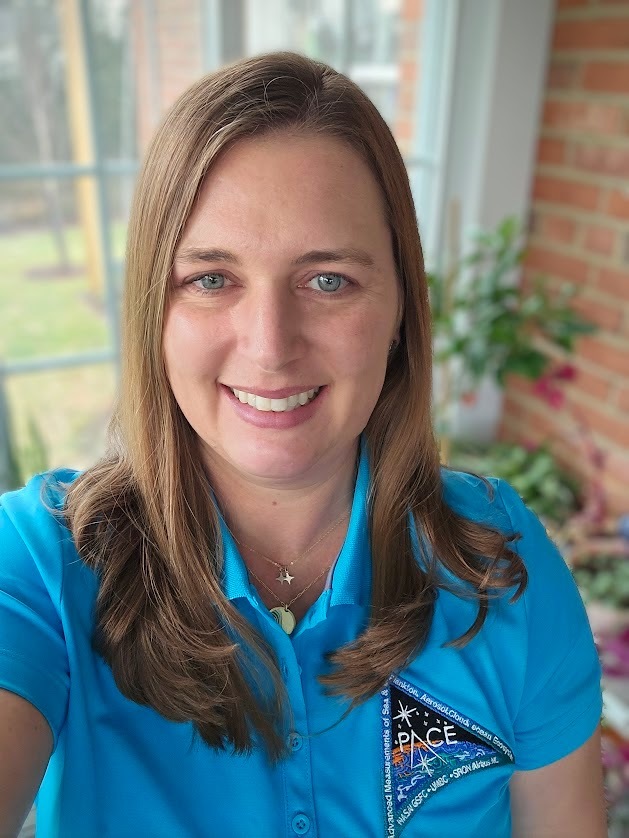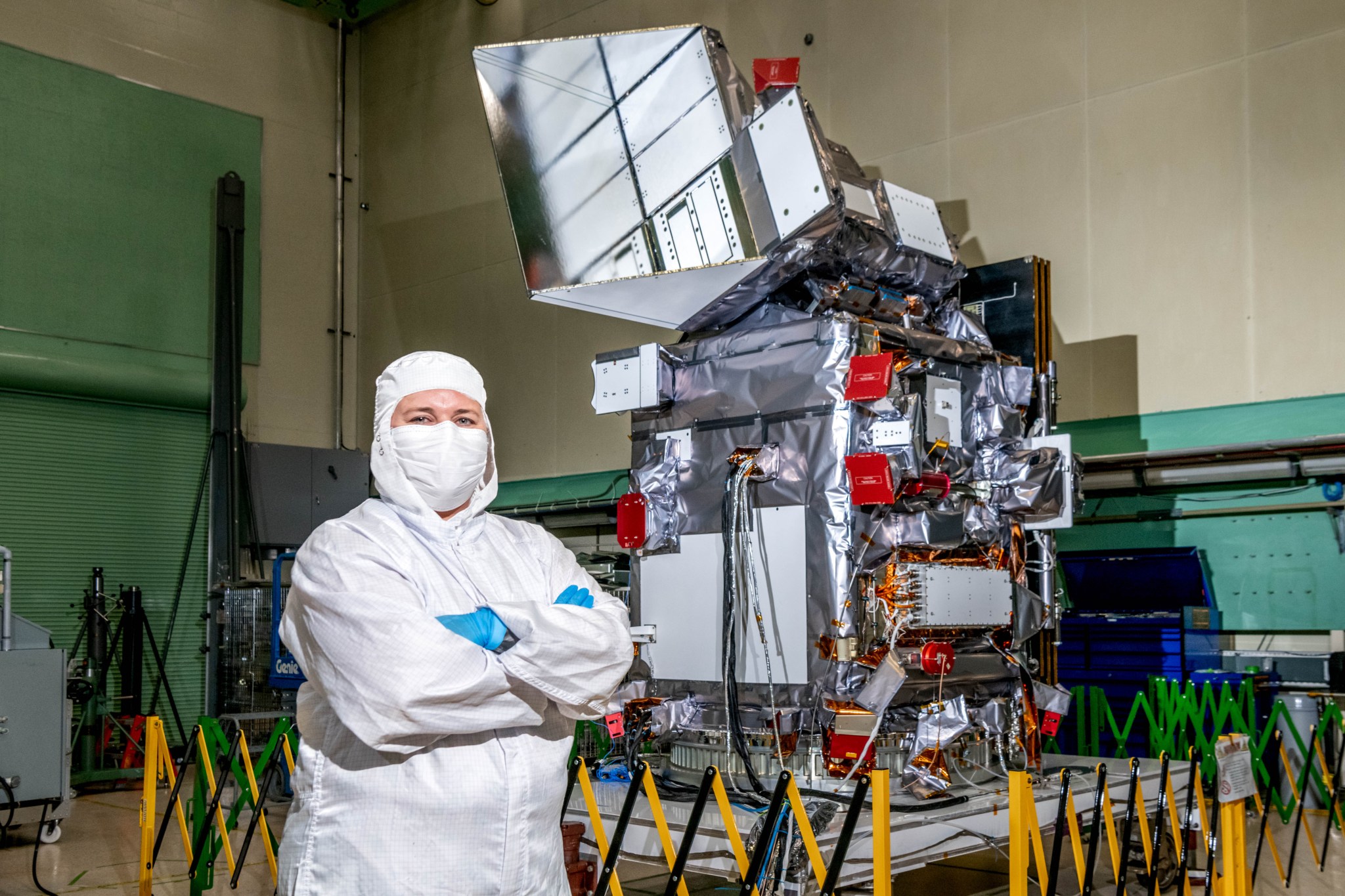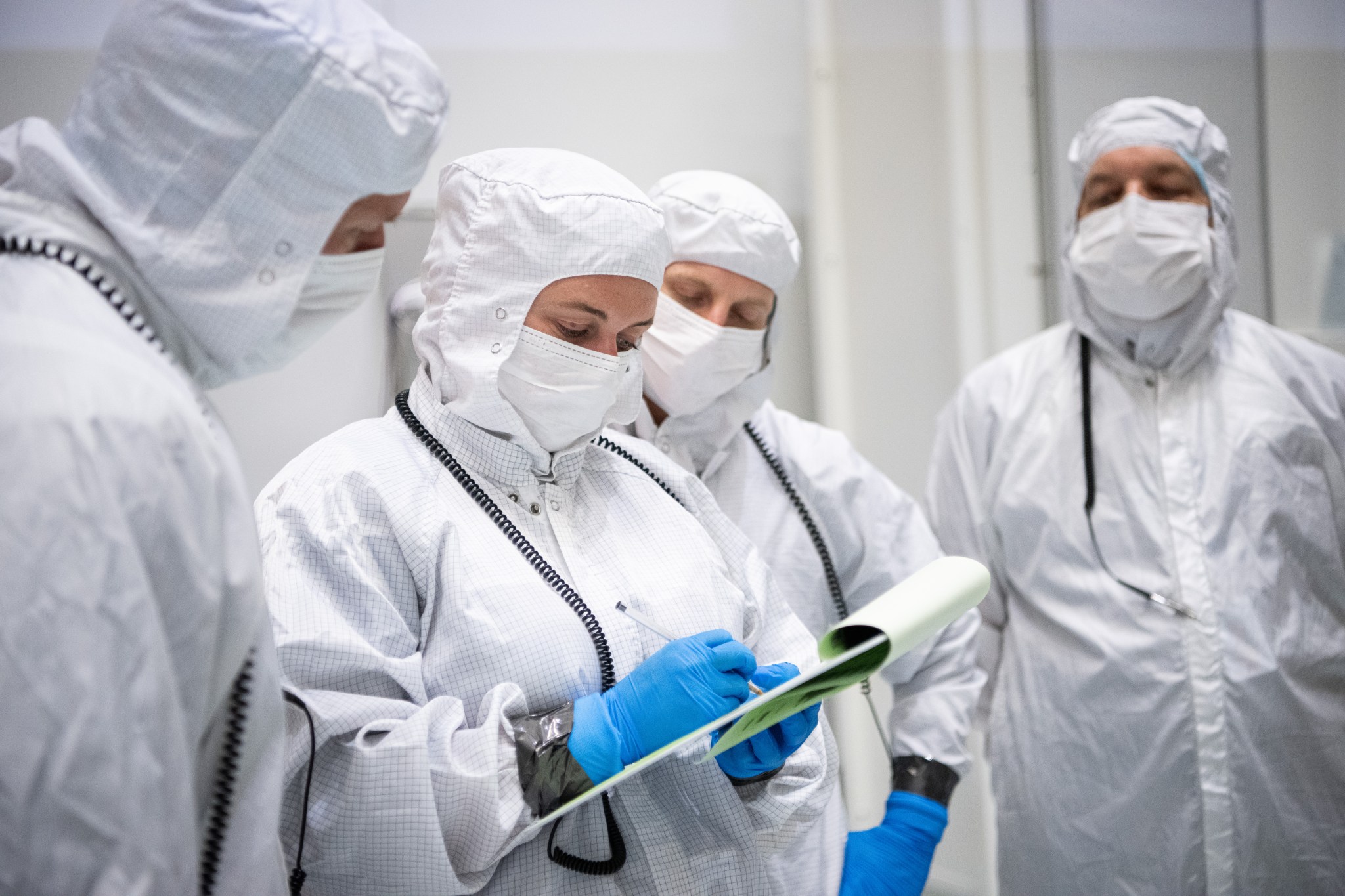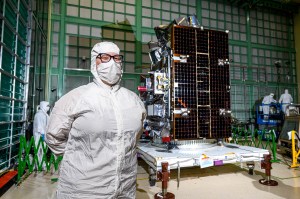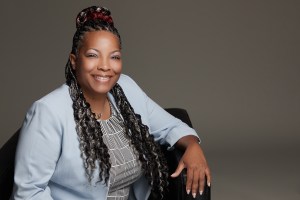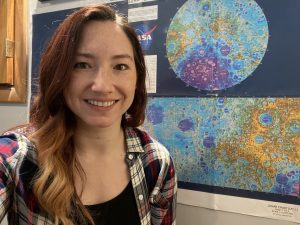PACE Systems Engineer Kate A. McGinnis spent years planning the vibration, acoustic, and shock tests for the PACE spacecraft before saying “Systems is ‘go’” to start each test.
Name: Kate A. McGinnis
Title: Plankton, Aerosol, Cloud, and Ocean Ecosystem Mission (PACE) Systems Engineer
Formal Job Classification: Systems engineer
Organization: Mission Systems Engineering Branch, Engineering and Technology Directorate (Code 599)
What do you do and what is most interesting about your role here at Goddard?
As a PACE systems engineer, I really love seeing the spacecraft come together at the top level. It has been great working with the systems team and the rest of the PACE team as we enter our environmental test phase and see the final spacecraft take shape.
Why did you become a systems engineer? What is your educational background?
I have always been interested in space. I wanted to be an astronaut, but I used to get airsick, so my parents encouraged me to look around elsewhere. I loved building things with Legos and K’NEX. In first grade, I built a space shuttle for “show and tell.” It was my pride and joy.
In 2007 and 2008, respectively, I earned a B.S. and master’s in mechanical engineering from Cornell University. In 2016, I got a master’s in space policy from George Washington University because I wanted to see the top level of space policy to understand why we build what we build.
Why did you want to work at Goddard?
My first job was working on proposals for science spacecraft. While there, I met several Goddard scientists. I also met astronaut Sally Ride at an event at the Visitor Center. She truly inspired me to work at Goddard. She has always been a hero of mine because she showed that a woman could be at the top level of science, NASA, and space. It took me awhile to get here, through various jobs in the space industry including working on commercial communications satellites and science satellites for NOAA, the National Oceanic and Atmospheric Administration.
In 2017, I came to Goddard to work on satellite servicing as part of the OSAM-1 mission. In 2021, I became part of the PACE team to work on integration and testing (I&T), which was a new area for me.
What is cool about spacecraft I&T?
The spacecraft test program at Goddard is designed to get as close as possible to the environments of launch and space. Our goal is to really put the satellite through a full range of tests to ensure it survives the tough environment of the ride on the rocket and is still able to do all we need it to do in space.
Coming from a mechanical background, I worked a lot on the vibration, acoustic, and shock tests. For the vibration test, we crane-lift the satellite onto a vibration table and shake the whole thing. For the acoustic test, we blast the spacecraft with sound in an acoustic chamber because when we launch, noise from the rocket engines blasting reflects off the launch pad back into the rocket and the spacecraft. The sound is so loud that it is even louder than the U.S. Marine Band playing at full volume. For the shock tests, we simulate the spacecraft detaching from the rocket. We lift the spacecraft up and fire the attachment ring locks, and the ring drops onto a foam pad.
What goes through you head before you say “Systems is ‘go’” for a test?
Our control room is near the test chambers, but we can’t see the testing directly. We use cameras to monitor the spacecraft. Before these tests, I am a little nervous. It takes years working on all the plans to get ready for the test.
When I am finally sitting in the control room, watching all these screens, it is always a moment of excitement but also nervousness. I am the one who says “Systems is ‘go’,” which starts the test. Then I am really focused on the telemetry screens and video feed. These tests happen so quickly so we have automated systems to abort if necessary.
When the test is completed, it can take some time to review all the data. Waiting is a bit nerve-wracking. Meantime, we run an aliveness test on the spacecraft to make sure everything still powers on.
At the end of a successful test, it is a big relief, but it is also very exciting. We know we are ready for the next step.
What will be your involvement with the launch?
PACE launched on Feb. 8, 2024, from Kennedy Space Center in Florida. Part of our team was at the launch and the rest of us were here at Goddard in the Launch Support Room and the Missions Operations Center, which is basically mission control for PACE.
The data from PACE will help us better understand the ocean. Our main instrument is the Ocean Color Instrument, built in-house at Goddard, which will be able to distinguish the different colors of the ocean to a whole new level to give information on phytoplankton and therefore ocean health. We have two other instruments, polarimeters HARP2 and SPEXOne from our partners at University of Maryland, Baltimore County and SRON (the Netherlands Institute for Space Research) respectively.
Who is your mentor?
Bob Tornabene, who is at NASA’s Glenn Research Center in Cleveland, has given me a great perspective on systems engineering as a whole, not just at Goddard. He has taught me a lot about being part of a team, how to find out where you are needed and step into that role to help the team. I’ve also learned so much from my coworkers at Goddard.
What do you do for fun?
I have a lot of fun taking my 5-year-old son to science activities including those at our Visitor Center. We’re also always building and fixing things around our house. He wants to help me build the Ikea shelves we just bought, but he often runs away with the tools to work on his own “projects.” My husband is also a Goddard engineer, so I think our son is destined to become an engineer too.
I read a lot, especially science fiction. I also read space and science books to my son. Currently I am reading him “The Nine Planets,” a book from my childhood. I’ve had to explain what happened to Pluto, but we also get to talk about what neat missions Goddard might work on next.
What is your motivational motto?
Just keep moving forward.
By Elizabeth M. Jarrell
NASA’s Goddard Space Flight Center, Greenbelt, Md.
Conversations With Goddard is a collection of Q&A profiles highlighting the breadth and depth of NASA’s Goddard Space Flight Center’s talented and diverse workforce. The Conversations have been published twice a month on average since May 2011. Read past editions on Goddard’s “Our People” webpage.





























